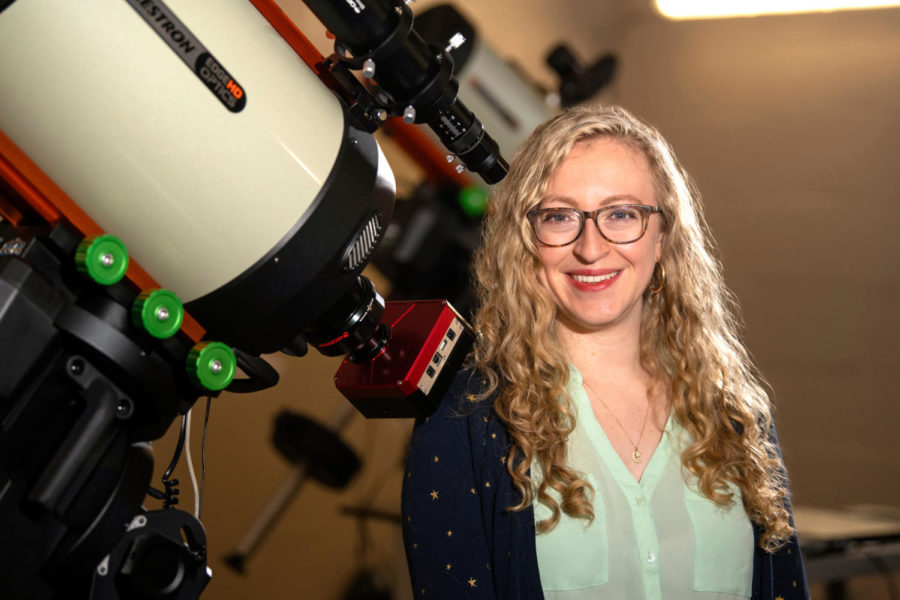Bucknell professor discovers magnetic field 12 light-years Away
April 14, 2023
Photo courtesy of Emily Paine, Bucknell University Communications.
Professor of Physics and Astronomy Jackie Villadsen is the co-author of a paper documenting radio waves from the red dwarf star YZ Ceti, which is 12 light-years away.
This star is close to a planet, YZ Ceti b, and the brightness of these radio waves could mean that this planet has a magnetic field similar to Earth’s.
Villadsen worked with second co-author J. Sebastian Pineda, a research astrophysicist at the University of Colorado Boulder. They both observed a radio signal coming from YZ Ceti through a radio telescope operated by the U.S. National Science Foundation’s (NSF) National Radio Astronomy Observatory (NRAO).
The NSF is supporting Villadsen and Pineda to understand how magnetic fields interact between far-away stars and planets. Their research was published in the journal “Nature Astronomy.”
In the paper proper, there were 2 to 4-gigahertz radio bursts detected from the slowly rotating YZ Ceti during the orbital period of YZ Ceti b, the system’s innermost planet. Two coherent bursts occurred at similar orbital positions of YZ Ceti b, which implied an enhanced probability of the magnetic field interacting between the planet and star.
“Planet magnetic fields are the ‘force fields’ that protect the planets from losing all of their air, so finding ways to detect these force fields is pretty exciting,” she said, in a press release. “If we are correct and the planet is causing these radio waves from its host star, it may have a magnetic field similar to Earth’s.”
The fact that they were able to detect YZ Ceti’s radio waves could signal that the planet it’s orbiting around could be similar to Earth’s.
“To lock down planets that are definitely known to be causing bursts of radio waves from the star, we’re going to require a pretty long monitoring program. We need to point [the array] at that star regularly for a long time to know if these radio wave bursts are really repeating with a planet. What we have identified is a system [YZ Ceti] that’s really worth putting in that time and monitoring it long term.”
Villadsen said the team analyzed the star for about 25 hours, less than one full orbit, but they already had one third of the original orbit to include. They then revisited a spot where they saw a radio burst.
“Then we saw a second radio burst that was close to the same planetary position, but not exactly the same. That’s promising for star-planet interaction. What’s needed long term is to follow this thing up and look over and over again and see if the bursts always happen when the planet is near this position in its orbit,” Villadsen said.
Villadsen, Pineda and Bucknell physics student Arjun Anand ’25 will continue to study the radio bursts between stars and their orbiting planets during a summer research trip at the NRAO.
“Magnetic fields in themselves are beautiful phenomena to observe, and the idea that there are other planets that create the same magnetic field as the Earth is incredible! I think there is a lot to be learned about our solar system, and I am excited to join Professor Villadsen this summer in a potentially ground-breaking discovery,” Anand said.






















